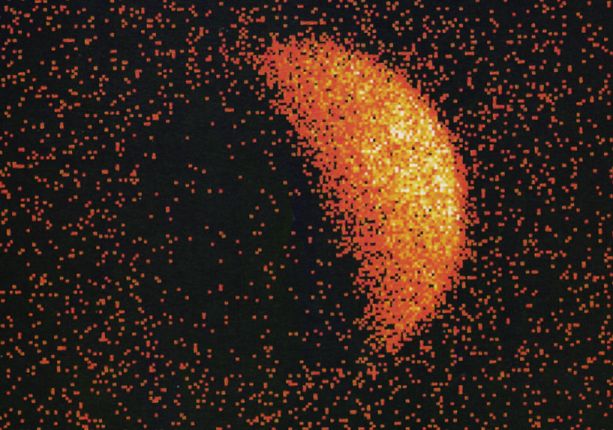X Ray Moon

Explanation:
This x-ray image of
the Moon
was made by the orbiting
ROSAT
(
Röntgensatellit) Observatory in 1990.
In this digital picture, pixel brightness corresponds to x-ray intensity.
Consider the image in three parts:
the bright hemisphere of the x-ray moon,
the darker half of the moon,
and the
x-ray sky background.
The bright lunar hemisphere shines
in x-rays because it reflects
x-rays emitted by the sun ... just as it
shines
at night by reflecting visible sunlight.
The
background sky has an x-ray
glow in part due to
the myriad of distant, powerful active galaxies, unresolved
in the ROSAT picture but recently detected in Chandra Observatory
x-ray images.
But why isn't the dark half of the moon completely dark?
It's true that the dark lunar face is in
shadow and so is not
reflecting
solar x-rays.
Still, the few x-ray photons which seem to come from the moon's
dark half are currently thought to be caused by energetic particles in
the
solar wind bombarding the lunar surface.
Authors & editors:
Robert Nemiroff
(MTU) &
Jerry Bonnell
(USRA)
NASA Web Site Statements, Warnings,
and Disclaimers
NASA Official: Jay Norris.
Specific
rights apply.
A service of:
LHEA at
NASA /
GSFC
& Michigan Tech. U.

